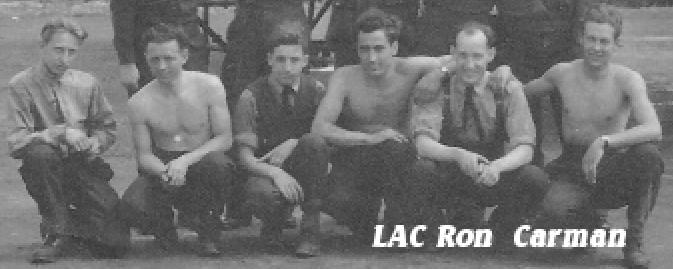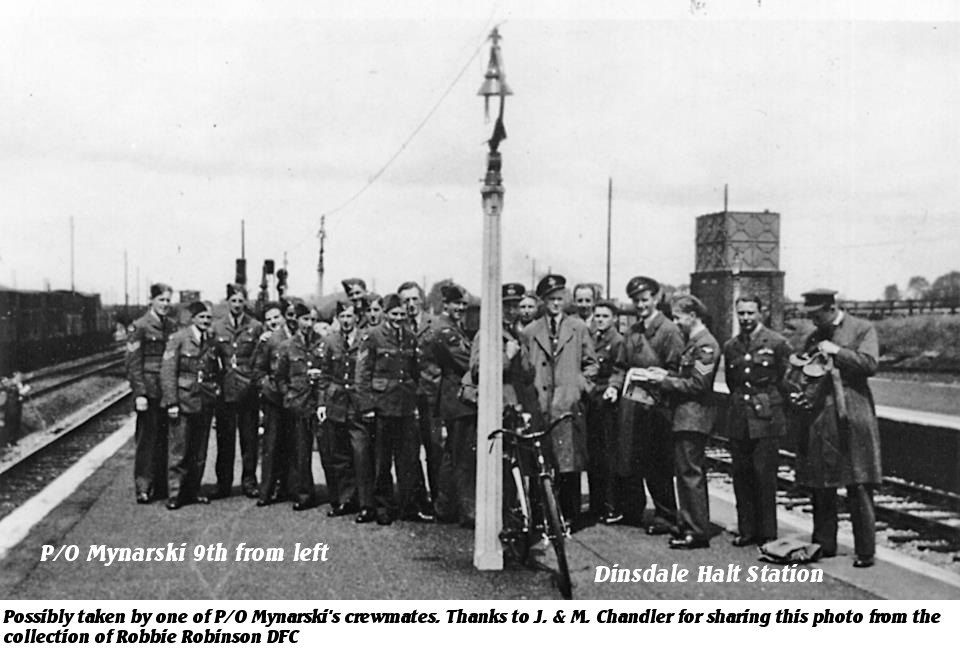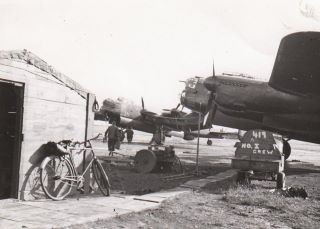
The Road to Becoming an Engine Basher:
After initial training at No. 2 Manning Depot, Brandon Manitoba AC2 Carman was posted to St.Thomas. Where No. 1 Technical Training School supplied tens of thousands of highly trained men over the next three years.
The variety of trades and contents of each of the courses changed over the years. However the level competence necessary to be maintain a place at the school always remained high.
AC2 Carman worked his way through each week's testing and exams, achieving passing grades each time. Which was a must to stay on at St.Thomas.
The courses began with the basics such as introduction to fitting procedures and tools; built their way through explanations on the internal combustion engine; carburettors; magnetos; air-cooled Engines; liquid-cooled Engines; variable pitch propellers; with each stage becoming more intense and demanding.
On May 27th. 1942 Ron Cameron was presented with his LAC "prop" a designation of his successful completion of his Aeroengine training.


 Once his training at St. Thomas was completed, LAC Carman would spend the next few months at No. 17 EFTS
in Nova Scotia honing his skills before leaving for an overseas posting.
Once his training at St. Thomas was completed, LAC Carman would spend the next few months at No. 17 EFTS
in Nova Scotia honing his skills before leaving for an overseas posting.Overseas - A Whole Different World
The voyage over to Britain was anything but luxurious, even while travelling on the newest luxury liner afloat. The once first class Queen Elizabeth had been converted for war duties and bunks could be up to ten levels high. The cramped troops and airmen were packed on to a ship carrying five times the normal number of passengers it had been designed for. A Life Boat drill was held, men lined up three to five wide and strung out along decks and through hatchways in what appeared to be a never ending series of lines. It was clear to all who could comprehend that there was little hope of escaping the sinking ship if they were torpedoed.
The Queen sped on without escort support, her speed was her major weapon along with a few deck guns. The journey would seem much longer then it really was even though the Queen's speed was faster than any other troop ship .
Once in Britain the first posting as with all RCAF personnel was to No. 3 PRC at Bournemouth. It would be here that the new world of rationing, blackouts, air raids would begin.
Within weeks he was posted to 419 Squadron at Middleton St. George arriving there March 27 th. of 1943.
To arrive at his new posting he would travel by crowded trains headed North to Yorkshire. There were two different train lines to the Base, one which runs along the out skirts of the base and would have provided the LAC his first view of his future home and work place. Arrival at the single platform station of the LNER line at Dinsdale followed by a ride in a WAAF driven truck if lucky, other wise a one mile or so march to the main gates to present the paperwork to the guards then eventually assigned a barracks.

Life On base
As an Engine Fitter he would work outside on one of the dispersal pads spread out around the fields that made up the base. The only shelter would be the make shift huts build from what ever could be scrounged or bartered for. The work itself was not governed by a clock, it started and ended when the work was deemed competed by the Sergeant in charge. An engine mechanic would work on a scaffold build around the engine many feet above the ground or straddle the engine and hope not to fall off. Icy, rainy or windy weather often caused falls or cases of phenomena but the work went on.
 For LAC Carman the dangers did not come from tangling on an engine twelve feet above the ground, in his case it was
an over anxious pilot and a moving aircraft that almost sent him to hospital or worse.
For LAC Carman the dangers did not come from tangling on an engine twelve feet above the ground, in his case it was
an over anxious pilot and a moving aircraft that almost sent him to hospital or worse.On this particular night they were running up the engines getting ready for a mission. He went to climb in the back door of the Halifax to check with the pilot and flight engineer to see if everything was ok when the pilot hit the throttles to start taxiing. The wash from the props blew Carman onto the ground and the next thing he knew the tail wheel was heading for him. He managed to roll out of the way just before it would have hit him.
Being on Leave was not the only way in which ground crews managed to get out and see life from the other side. There were times when Moose aircraft needed to land at RAF bases nearer the South coast. Bad weather, low on fuel or in need of repairs or because of battle damage.
For those aircraft which needed repairs 419 would send a crew of ground trades to whichever RAF base the bomber with the VR on her had managed to put down.
Many RCAF, especially those of a lower rank found the highly regimented discipline at these bases overwhelming and restrictive in accomplishing their duties. LAC Carman was of the same mind and found he hated the whole experience after being sent to such a base.
Sent to Coltishall to exchange two engines which had been shot up while the Halifax was over Essen. The ground crew and I guess F/O MacIntosh and his crew as well just wanted to get out of there. For they took the aircraft up and back to the home base with some of the instruments on the floor of the aircraft. With Carman flying along with them calling out the instrument readings to the pilot and Flight Engineer.
Diversions
To some the dispersal pad became more of a home then their barracks. It would be here that LAC Carman would meet the ever changing parade of aircrew who would "borrow" his aircraft for the night. Also spending hours waiting for the crews to return, and times of crushing sadness at their loss
It was not all work, there were opportunities for a ride on the bomber during a flight check. The test flights had other advantages among them taking some beer up into the cooler temperatures found high above the ground to add a more Canadian touch then the room temperature ales sold at the local pubs "The Oak Tree" and "The Davenport".


Returning Home
As October of 1943 rolled round LAC Ron Carman was posted to No. 1664 Heavy Conversion Unit.
Completing courses on the Bristol Hercules engine during his time at 61 Base then putting it to use for the last months of the war. Staying on duty overseas until September of 1945. There had also an opportunity where all mechanics could apply for aircrew as Flight Engineers. There were those who took the chance to remuster as aircrew. An opening many had hoped for when first signing up. The reality was, some of those who became Flight Engineers would never return home again.
A month later in October he returned to Vancouver, but not alone he met and married Dorothy Dorrington from Thornaby-on- Tees. From a village in Yorkshire to a farm in British Columbia was a big change at the beginning for his wife of 56 years.
Ron attended a number of squadron reunions and returned with his wife to visit Yorkshire family and see the old base. On one visit to Middleton St. George as a returning veteran of the bases war years he was treated to a special tour of the areas where most others were not allowed.
Ron expressed his time overseas as some of the best times of my life.
Ron Carman passed away in 2001.